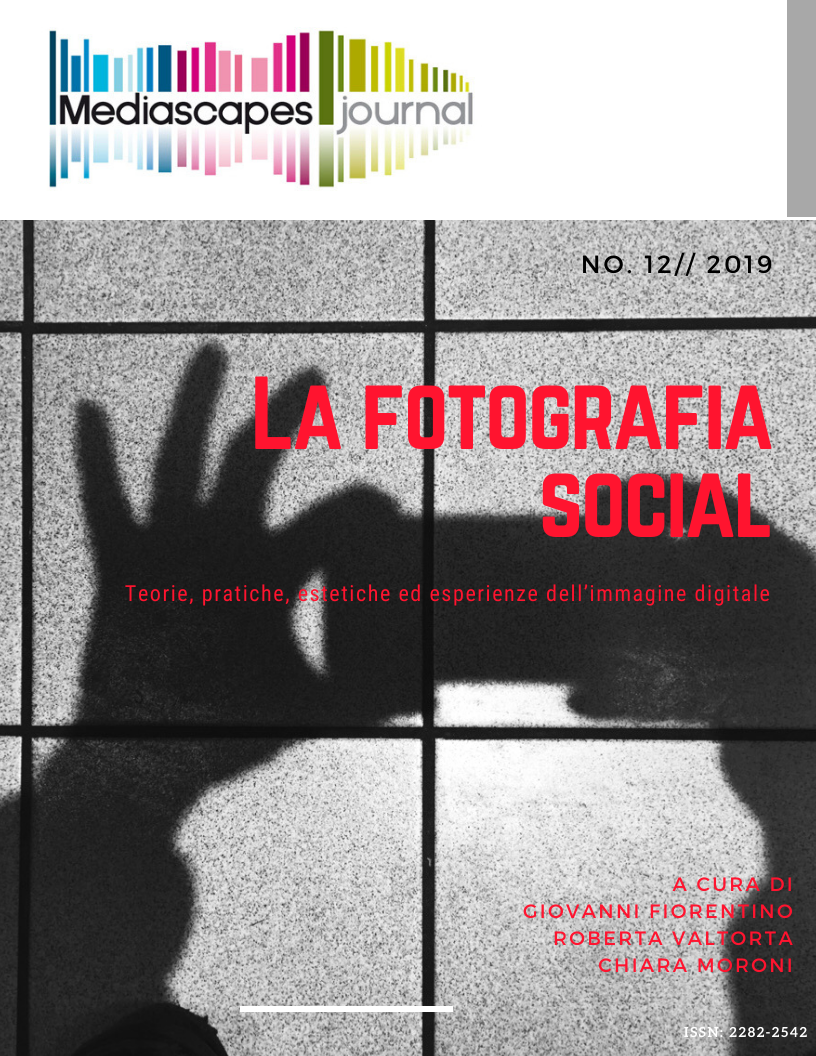“Come fare cose con le foto”. La fotografia social tra costruzione identitaria e ricerca di senso
Keywords:
selfie, meme, speech act, visual actAbstract
The technological daily life contributes to gradual but continuous modifications of the people’s behavior, including an incessant process of modeling and re-modeling of the self, of their communicative instances and their existence; today it is common to identify existential online modes more complex and articulated than their respective 'physical' lives. In this context of virtuality, in which the being is continuously wavering between the real world and the social environment, the image has taken on different meanings and weights compared to the traditional reading offered by Western culture. Today the image (and therefore the photograph) is a 'surplus', that has the seed of an instantaneous and involving signification, although it highlights its permanent and lasting being. In the shared space, photography can return to vogue, be filmed and re-read in different significant re-propositions and interpretations, as if inserted in a continuous process of resemantization. Thus, social practices propose a photograph that can also be configured as an innovative inguistic act, able to be one of the privileged elements (if not the main one) of the digital dialectical conversation, as evidenced by the wide use of memes and stereotyped images that virally circulate in the digital daily life. On the one hand, in fact, social photography seems to be a means through which to initiate processes of construction and reconstruction of identity (through, for example, the selfie); on the other hand, it - in its declination of meme - can become an instrument (a linguistic act) useful to forms of participatory and viral communication, as well as, in some cases, to the modeling of collectivizing lines of thought.
Starting from these assumptions and from studies of the philosophy of language, visual culture, and media anthropology, the intervention aims to highlight how users could narrate their daily life and testify their existence with images and selfies. These visual elements can also be considered a stereotyped system of collective identity to whom users can draw inspiration to their photos. But selfies could also be considered a specific modality to communicate and engage others on SNSs: in this way, users could use selfies also as linguistic and communicative acts. Thereby, starting from the Speech Acts Theory by John Austin and John Searle and from the analysis of several cases from the Net, the article presents the hypothesis that selfies and memes could be visual speech acts, as visual utterances; in this way, users could speak online through images and a multimode blocks of meaning.
Downloads
Published
How to Cite
Issue
Section
License
Mediascapes Journal is published under a Creative Commons Attribution Licence 4.0.
With the licence CC-BY, authors retain the copyright, allowing anyone to download, reuse, re-print, modify, distribute and/or copy their contribution. The work must be properly attributed to its author. It should be also mentioned that the work has been first published by the journal Anuac.
Having published these contributions for the first time, Mediascapes Journal will have the right to publish them integrally or partially as reprints or possibly as part of a thematic issue, in both digital and printed format.
It is not necessary to ask further permissions both to author or the journal.


